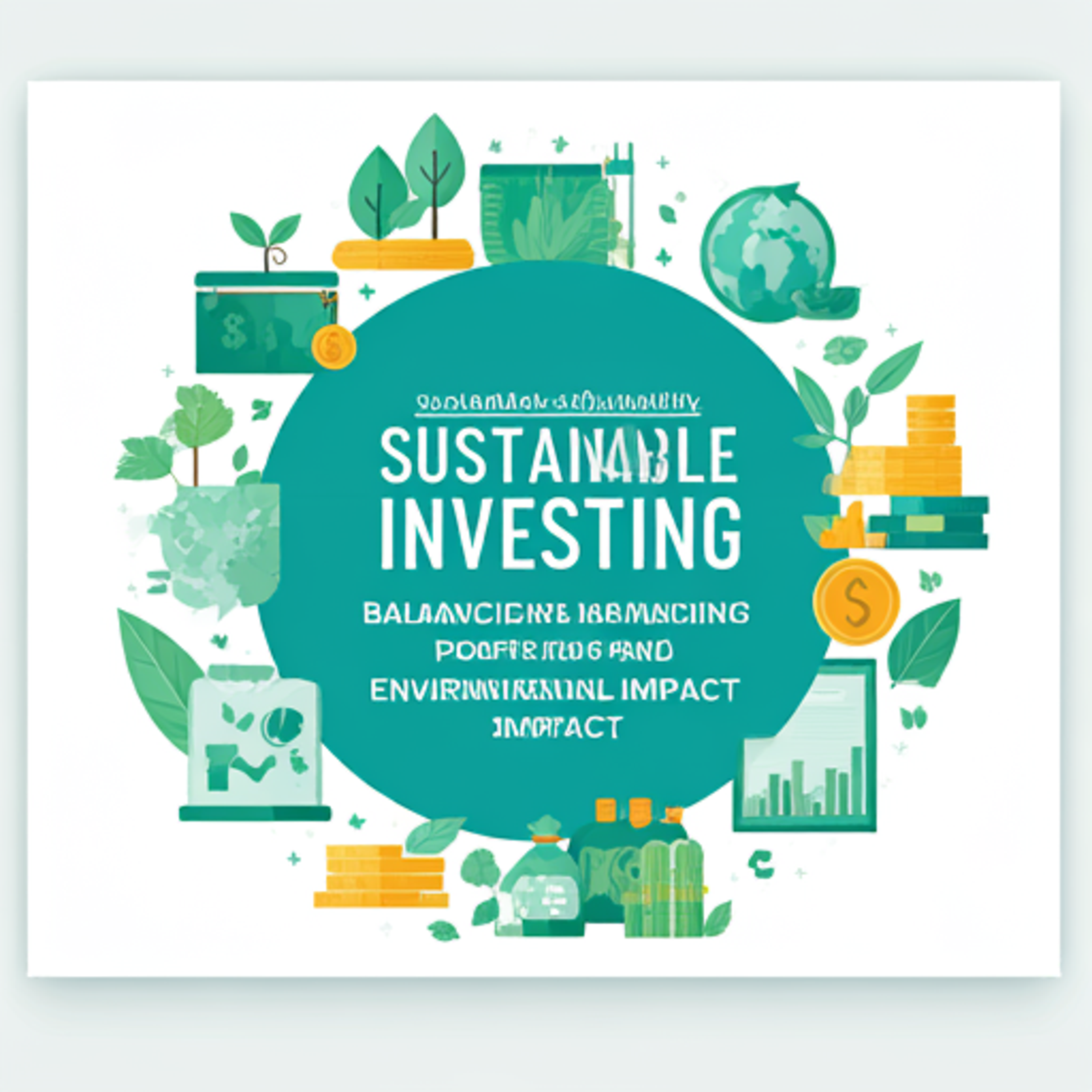Sustainable Investing: Balancing Profits and Environmental Impact
Definition and Importance
Sustainable investing refers to the practice of making investment decisions that consider both financial returns and positive environmental impact. This approach is increasingly important as investors seek to align their portfolios with their values. Many are concerned about climate change and social issues. It’s a growing trend.
Key aspects include:
Investors can drive change. It’s a powerful tool. By prioritizing sustainability, they can influence corporate behavior. This is crucial for our planet’s future.
Historical Context and Evolution
Sustainable investing has evolved significantly over the past few decades. Initially, it emerged as a response to social and environmental concerns. Investors began to recognize the impact of their choices. This shift was driven by growing awareness of corporate responsibility.
In the 1970s, socially responsible investing (SRI) gained traction. It focused on excluding harmful industries. This was a pivotal moment. Over time, the integration of ESG factors became more prevalent. Today, many investors view sustainability as essential for risk management. It’s a strategic necessity.
The Role of Cryprocurrency in Sustainable Investing
Overview of Cryptocurrency’s Environmental Impact
Cryptocurrency has garnered attention for its significant environmental impact, primarily due to energy-intensive mining processes. These operations often rely on fossil fuels, contributing to carbon emissions. This reality raises concerns among investors focused on sustainability. Many are alarmed by the ecological footprint.
The energy consumption of major cryptocurrencies can be staggering. For instance, Bitcoin mining consumes more electricity than some countries. This fact is alarming. As a result, the industry faces increasing pressure to adopt greener practices. Transitioning
Potential for Positive Change in the Industry
The cryptocurrency industry holds significant potential for positive change, particularly through the adoption of sustainable practices. By transitioning to renewable energy sources, miners can drastically reduce their carbon footprint. This shift is essential for long-term viability. Many companies are already exploring innovative solutions.
For example, some are investing in solar and wind energy. This is a promising development. Additionally, blockchain technology can enhance transparency in energy consumption. It’s a game changer. Such advancements can align the industry with sustainable investing goals. This is crucial for future growth.
Key Principles of Sustainable Investing
Environmental, Social, and Governance (ESG) Criteria
Environmental, Social, and Governance (
Long-term Value Creation
Long-term value creation is essential in sustainable investing. It emphasizes the importance of integrating ESG factors into investment strategies. This approach enhances risk management and fosters resilience. Investors can achieve superior returns over time. It’s a strategic advantage.
By focusing on sustainability, companies can build stronger reputations. This leads to increased customer loyalty. Investors should consider these factors seriously. They are crucial for future success.
Challenges in Sustainable Cryptocurrency Investments
Energy Consumption and Carbon Footprint
Energy consumption and carbon footprint present significant challenges in sustainable cryptocurrency investments. The mining process often requires substantial electricity, primarily sourced from fossil fuels. This reliance increases greenhouse gas emissions. It’s a pressing concern.
Investors must evaluate the sustainability of their portfolios. This is essential for long-term viability. Transitioning to renewable energy sources is crucial. It can mitigate environmental impacts effectively.
Regulatory and Market Volatility
Regulatory and market volatility pose significant challenges for sustainable cryptocurrency investments. Frequent changes in regulations can create uncertainty. This uncertainty affects investor confidence. He must navigate these complexities carefully.
Market fluctuations can also impact sustainability initiatives. They may hinder long-term planning. Investors should remain vigilant. Staying informed is crucial.
Innovative Solutions for Sustainable Practices
Green Mining Initiatives
Green mining initiatives are emerging as vital solutions for reducing the environmental impact of cryptocurrency mining. By utilizing renewable energy sources, such as solar and wind, miners can significantly lower their carbon emissions. This transition is essential for sustainability. Many companies are adopting innovative technologies to enhance energy efficiency.
For instance, some are implementing advanced cooling systems. This reduces energy consumption. Additionally, partnerships with energy providers can facilitate access to greener options. It’s a strategic move. These initiatives not only benefit the environment but also improve long-term profitability.
Carbon Offsetting Strategies
Carbon offsetting strategies are essential for mitigating the environmental impact of cryptocurrency operations. By investing in projects that reduce greenhouse gas emissions, miners can balance their carbon footprint. This approach is increasingly popular.
Common strategies include:
These initiatives not only help the environment but also enhance corporate reputation. He can attract eco-conscious investors. Implementing such strategies is a responsible choice. It demonstrates commitment to sustainability.
Case Studies of Sustainable Cryptocurrency Projects
Successful Examples in the Market
Successful examples in the market demonstrate the viability of sustainable cryptocurrency projects. One notable case is Chia Network, which utilizes a proof-of-space-and-time consensus mechanism. This method significantly reduces energy consumption. It’s an innovative approach.
Another example is SolarCoin, which rewards solar energy producers with cryptocurrency. This incentivizes renewable energy adoption. Such projects illustrate the potential for aligning profitability with sustainability. They attract environmentally conscious investors.
Lessons Learned and Best Practices
Lessons learned from sustainable cryptocurrency projects highlight the importance of transparency and accountability. Successful initiatives often prioritize clear communication with stakeholders. This builds trust and credibility.
Additionally, integrating renewable energy sources is crucial. It reduces operational costs and environmental impact. Companies should also focus on community engagement. This fosters a supportive ecosystem. These practices enhance long-term sustainability.
The Future of Sustainable Investing in Cryptocurrency
Trends and Predictions
Trends indicate a growing emphasis on sustainable investing within the cryptocurrency sector. As regulatory frameworks evolve, companies will increasingly adopt environmentally friendly practices. This shift is necessary for compliance.
Moreover, advancements in technology will facilitate greener mining solutions. These innovations can significantly reduce energy consumption. Investors are likely to prioritize sustainability in their portfolios. It’s a smart move.
Call to Action for Investors and Developers
Investors and developers must prioritize sustainable practices in cryptocurrency. By integrating ESG criteria, they can enhance long-term value. This approach mitigates risks associated with environmental regulations.
Furthermore, collaboration on green initiatives is essential. It fosters innovation and drives industry standards. Investors should actively seek out sustainable projects. This is a responsible choice.
